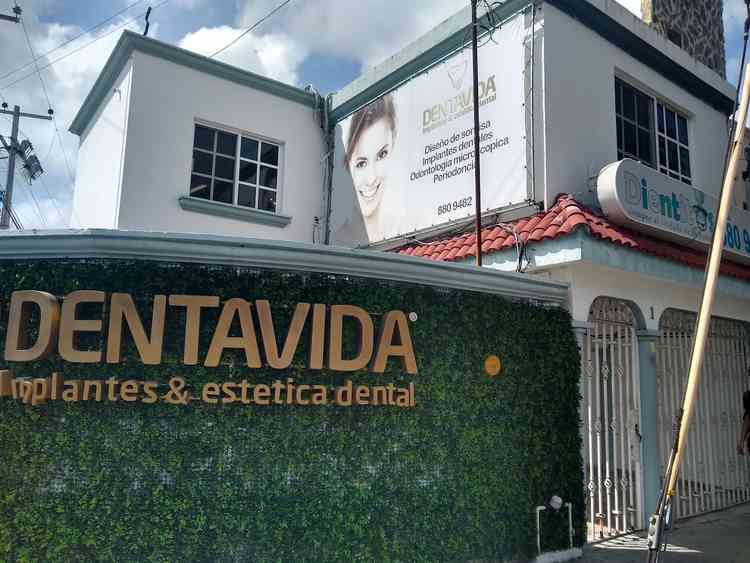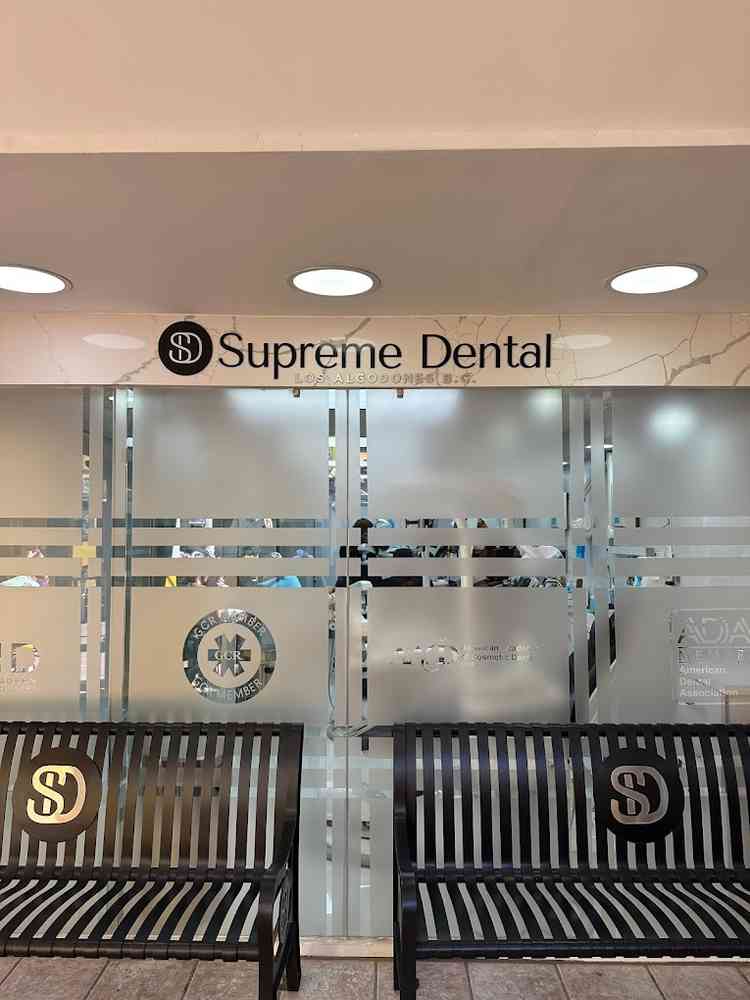Is Black Teeth Plaque Dangerous? Here’s What You Need To Know

Prathyusha Itikarlapalli
- Content Writer

Key Takeaways
- Black teeth plaque is not just a cosmetic issue. These tartar are tough, hardened plaques harboring bacteria and lead to serious gum problems and cavities.
- Smoking, chewing tobacco, and failing to maintain proper oral hygiene are some of the dental black plaque causes. Following basic oral hygiene (brushing and flossing) removes sticky films and trapped food particles. This reduces the incidence of plaque formation and black plaque between teeth.
- Home remedies may seem appealing, but their safety and effectiveness are not guaranteed. Dentists perform dental scaling and root planing to remove hard plaque and smooth the roots. They use special hand-held tools to scrub tartar and remove it. Using antibiotics after the procedure reduces the risk of infection.
What Is the Black Stuff on My Teeth?
The black tartar, also known as black tooth plaque, is actually the calculus that remains on the tooth surface when routine oral hygiene activities fail to remove it. Over 2-20% of people can develop black plaque teeth.[1] These carry serious risks that are more than looks! When left untreated for prolonged periods, bacterial plaques can lead to gum disease, tooth infections, and other serious oral health issues.
Plaque, Black Tooth Plaque, Tartar, and Cavities: Understand the Difference
While these dental terms seem similar, knowing the difference between them will help you gain clarity on what's happening in your mouth.
Plaque is the sticky, colorless film of saliva and bacteria along with trapped food particles on and between the tooth surfaces. Plaques are simple and can be removed easily with brushing and flossing. Black tooth plaque, on the other hand, is dark-colored and tougher compared to the plaques that constantly form every day. Black teeth plaque is more stubborn and cannot be removed at home. Tartar is a hardened plaque due to minerals in saliva. These serve as a breeding ground for bacteria and cannot be removed through simple actions of brushing or flossing. Only professional dental cleanings can remove the tartar. Dental cavities result from bacterial action on the teeth. Plaques and tartar cause cavities, allowing bacteria to enter the tooth structure and infect the tooth pulp. While plaques seem simple, neglect can take a severe toll on dental and overall health. Are you wondering what causes black teeth in adults? We covered it in the following section.
What Causes Black Tartar on Teeth?
The formation of black tartar on teeth, in fact, depends on the food you eat and the oral hygiene practices you follow. Your oral cavity contains millions of bacteria, some of which are beneficial, and others are detrimental. These bacteria rely on the food you eat, especially the sugars and starches, and produce acids. The bacteria form a sticky film on the teeth, onto which they cling for extended periods. These sticky films, along with saliva and trapped food particles, can be removed through simple practices such as brushing or flossing. When they are not removed due to compromised oral hygiene, these sticky films develop into plaques, which serve as breeding grounds for bacteria.
Furthermore, plaques harden up due to the minerals present in saliva, forming tartar. Tartar typically feels like a gritty, rough surface, creating an ideal environment for bacterial growth. During its initial stages, tartar appears as a yellow or brown color. Eventually, the plaque yellow teeth develops a grey or black tinge. Studies revealed that black teeth plaques are composed of chromogenic bacteria such as Actinomycetes and Prevotella melaninogenica. The black discoloration is caused by the insoluble ferric salt formed through the interaction between hydrogen sulfide-producing bacteria and the iron content present in the saliva or gingival fluid.[2] Certain medications, such as hemoglobin, iron supplements, or herbal remedies, can also cause black stains on the tartar.[3] In fact, this extent of staining depends on the food you eat and a few lifestyle habits.
Red wine, coffee, and tea rank among the top oral consumables that can stain teeth. Additionally, smoking or chewing tobacco can exacerbate the appearance of black stains on teeth. Chemicals like nicotine and tar penetrate deeper into the tooth enamel, causing it to stain over time. Furthermore, poor oral hygiene and tartar make teeth more susceptible to developing black teeth and gums. In some individuals, tartar develops near the gums, leading to gum inflammation and bleeding. The blood-stained tartar also appears as black tooth plaque.

Black Plaque on Teeth Removal: Why Should You Consider It?
Black teeth plaque isn’t just a cosmetic concern. It can signal serious oral health issues that require prompt professional attention.
Persistent black plaques that do not go off eventually cause severe gum irritation and chronic periodontal disease. As the bacteria within the plaques progress, they may cause gum irritation, resulting in tender, swollen, and puffy gums. As a result, some candidates see a loose tooth within the pocket. It can spread to the surrounding bone and gums, weakening them and causing intense pain. In others, these swollen gums bleed (gingivitis) even when you brush your teeth. Over time, the teeth become sensitive, causing intense pain while chewing. Some individuals experience the formation of tiny, pus-filled boils, which can be serious. On the other hand, a few candidates experience gum recession as a result of the body’s immune reaction. It happens when the body launches an inflammatory response against the bacteria within the plagued black teeth under gums. This causes the gums to be pulled back, exposing the tooth roots, which are more prone to the acid attack caused by bacterial growth. As a result, the tooth enamel becomes weakened, which can lead to cavities. The growing bacterial population produces a foul odor. In some cases, the tooth infection may spread to the brain or other parts of the body, such as the heart. A tooth infection that spreads to the heart is a serious condition, even leading to death.
Source: NICDR[4]
Black Plaque Teeth Removal: When Is It Needed?
Don’t delay booking a dental appointment if you notice signs linked to black teeth plaque. Ignoring early symptoms can allow the condition to worsen over time. Watch out for warning signs such as:
- Tender gums that appear bright red or purple
- Loose teeth, with pus-filled and swollen gums
- Sensitive and delicate gums that may bleed and are too sensitive to a slight touch
- The toothbrush carrying a blood tinge or spitting out blood after brushing or flossing due to bleeding gums
- New spaces between teeth typically appear like tiny black triangles
How To Remove Black Tartar From Teeth?
Dentists and hygienists remove black tartar from the teeth using deep scaling and root planning. Tartar is typically tough and cannot be removed at home. Therefore, dentists use specialized tools to remove it. Generally, dental black plaque treatment is carried out as an out-patient procedure under local anesthesia, over multiple appointments.
- Deep scaling: Dentists perform deep scaling using manual or ultrasonic scrapers (which use vibrations). These hand-held tools feature a loop or hook at one end, enabling dentists to scrape away hardened plaque. This procedure typically takes 1-2 hours and can be performed in one to two sittings or completed in a single session. It depends on the severity of black teeth plaque and your preferences. You will have to use antibiotics for a couple of days after the procedure.
- Root planing: Dentists perform root planing when the tartar builds beneath the gums. They lift the gum tissue using special tools to remove the black stuff on teeth near the gums, especially below the soft gumline, and smooth rough areas. This encourages gum reattachment and has a positive effect on oral and gum health.
Source: NCBI[5] [6]

How To Remove Black Stains From Teeth Naturally?
Only a dental professional should remove the black tooth plaque. It's better to avoid misleading advice or commercial gimmicks. While many at-home remedies are often suggested, they should be used only occasionally and with caution. These are never a substitute for professional treatment. Sole dependence on at-home tips can remove stains to some extent. However, these measures harm the original enamel of the teeth, leading to erosion, which causes sensitivity and increases your risk of cavities. More importantly, most of the so-called at-home “DIY” tips are effective for stain removal. It's important to note that teeth stains are quite different from plaque, tartar, and black tooth plaque. Teeth stains are more of a cosmetic issue, while black teeth plaques are a serious threat to oral and gum health. Below, we elaborate on the common recommended at-home DIY tips, their effectiveness, and the risks associated with carrying them excessively.
Black Tartar on Teeth Removal at Home Is More of a Myth!
Dental plaque hardens over the tooth surface, making it tough to remove. Following too aggressive measures may worsen the teeth. Ensure the safety and effectiveness of the method before attempting it. Here are a few commonly followed steps to remove black plaque from teeth. We elaborated on the effectiveness and safety of each one, so you can decide if it's a myth or a fact.
- Baking soda: A mixture of baking soda and water is applied to the teeth and gently brushed around the gums, removing sticky transparent plaque and stains. Stain removal makes your teeth whiter, giving you a sense of satisfaction as plaque and stains are removed. However, the truth is that although baking soda is a mild abrasive, it cannot break or scrub away the hardened plaques. While its alkaline nature can reduce the acid action of oral bacteria, excessive usage can erode the enamel, causing tooth sensitivity. Moreover, this practice irritates the gum tissues.
- Oil pulling: Place a tablespoon of coconut oil in your mouth and swish it for 15-20 minutes daily. While oil pulling is often mistaken for an effective at-home method for removing black teeth plaque, it cannot remove the already-formed tartar.
- Apple cider vinegar: Some people recommend mixing apple cider vinegar with water (in a ratio of one part to two parts) and swishing it around in the mouth. This is followed by rinsing the oral cavity with water can actually loosen the plaques and reduce their incidence of hardening. However, apple cider vinegar is acidic, carrying the potential to damage the enamel. Excessive usage causes gum irritation and enamel erosion.
- Activated charcoal: Brushing with activated charcoal is one of the most hyped at-home tips. However, its effectiveness is limited to stain removal. Charcoal is an effective absorbent and is great for teeth whitening. More importantly, activated charcoal cannot remove tartar or black plaque. In fact, its abrasive nature erodes enamel, causing gum recession.
- Hydrogen peroxide: Diluted hydrogen peroxide (one part hydrogen peroxide to two parts water) is recommended for swishing in the mouth. Some also advise brushing teeth with a mix of hydrogen peroxide and baking soda. Hydrogen peroxide is a bleaching agent and can remove stains while breaking down hard plaques to some extent. However, its effectiveness in removing tartar is slightly low, compared to its teeth-whitening ability. Furthermore, overreliance on hydrogen peroxide can lead to tooth sensitivity.
Most natural methods for removing black teeth plaque aren’t as effective or safe as the dentist’s approach. Approaching a qualified dental professional can help you manage it more easily and effectively. In fact, it's wiser to focus on preventing black teeth plaque rather than trying how to remove black tartar from teeth.
How To Prevent Black Plaque Between Teeth?
Focusing on oral hygiene and limiting foods that stain can help prevent the formation of black plaque on teeth. Follow these basic steps to attain your goals for better oral and gum health.
Brushing Your Teeth Daily
Brush your teeth twice a day to remove trapped food particles and plaque build-up. Use soft-bristled toothbrushes to avoid being too aggressive on your gums. Follow gentle, circular motions, ensuring you cover all surfaces of the teeth. Fluoride helps strengthen tooth enamel and prevents cavities. Choose fluoride toothpaste and interdental or electric brushes.
Flossing on a Regular Basis
Use wax-coated floss to clean the surfaces between your teeth and below the gumline. Flossing at least once a day helps you remove sticky plaque and trapped food particles. Gently insert the floss between teeth and make C-shaped curves near the gumline. However, ensure that you don’t force too much through the gumline. It may cause discomfort or pain in your soft gums, leading to bleeding.

Rinse With Mouthwash
Swish antiseptic mouthwash twice a day for 30 seconds to prevent plaque build-up and slow bacterial action. Avoid rinsing your oral cavity with water to allow the active ingredients to work effectively without being washed off. You may follow this on a dedicated schedule, preferably after a meal. However, refrain from eating or drinking for 30 minutes after using mouthwash.
Rely on a Healthy, Balanced Diet
A balanced meal not only nourishes your body but also supports the health of your oral cavity. Opt for healthy foods rich in antioxidants and low in sugar and starch content. Sugary meals contribute to plaque formation by serving as a ready energy source for bacteria. Avoid carbonated and acidic drinks, as they can cause enamel erosion. Chewing sugar-free gum produces more saliva, which washes away bacteria and reduces plaque.
Say No to Tobacco
Tobacco in any form, either smoking or chewing, has a severe toll on oral health. It reduces the saliva production and blood circulation within the gums. This makes your teeth more vulnerable to dental plaque. Further, tobacco products also cause stains on the teeth. So, cutting off smoking not only improves the aesthetics but also the dental and gum health.
Regular Dental Check-ups
Never miss the scheduled dental check-ups. Professional dental cleaning and hygiene sessions help prevent tooth infections. It also helps identify problems early on and act promptly before conditions worsen.
Final Word
Black teeth plaque isn’t just a cosmetic thing. It’s a warning sign of deeper oral health issues. Left untreated, it can lead to gum disease, tooth decay, infections, and even serious complications affecting other parts of the body. While home remedies may seem appealing, they often fall short and may even harm your enamel. The best way to manage black teeth plaque is through proper oral hygiene, regular dental visits, and professional cleanings. Don’t wait for it to worsen. Addressing black teeth plaque early is essential to protect your smile and overall health.
Are you worried about black teeth plaque or overdue for a dental checkup? Don’t wait until it turns into something serious. Sign up with Envoy Health today to connect with top-rated dental professionals and access affordable, high-quality care without the long wait. Your healthier smile starts here.
References
- Black Staining: An Overview For The General Dental Practitioner
- Chromogenic Black Dental Staining In Children: A Case Report
- Chromogenic Bacterial Staining Of Teeth: A Scoping Review
- Periodontal (Gum) Disease
- Routine Scale And Polish For Periodontal Health In Adults
- Dental Scaling And Root Planing For Periodontal Health: A Review Of The Clinical Effectiveness, Cost-Effectiveness, And Guidelines [Internet]
Disclaimer
The information in this article is for educational purposes only and does not replace medical advice. Always consult your doctor before starting any treatments.
You cannot fix the black plaque on your teeth at home. A dentist should scrape and remove plaque from the teeth using special, handheld dental instruments. Dental black plaque treatment includes deep cleaning and root planing, where your dentist removes the black plaque, cleans the tooth roots, and smoothes them.
Dental cavities are different from black plaque. Black plaque on teeth (calculus) is a hardened deposit formed from plaque, saliva, food, and bacteria. They serve as an active breeding ground for bacteria and cannot be eliminated by brushing or flossing. Dental cavities, on the other hand, are a result of untreated calculus and tartar. The bacteria enter the tooth through weak, cracked enamel, infect the tooth pulp, and cause cavities. You cannot remove black plaque or cavities from your teeth. Only dentists can treat them. They perform deep scaling and root planing to remove tartar. On the other hand, cavity treatment includes root canal therapy, pulpotomy, or tooth extraction based on the severity.
The black gunk on teeth is the hardened plaque or calculus. The saliva, along with oral bacteria and trapped particles, forms a sticky film on the teeth known as plaque. This plaque should be removed through daily practices of brushing and flossing. Otherwise, it hardens due to the minerals in saliva and forms a brown-tinged layer on the teeth. This, along with the food stains and chromogenic bacteria, appears as a black lining on the teeth, especially around the gums.
You cannot scrape black plaque off the teeth at home; in fact, it is dangerous. Black plaque is the hardened, tough plaque. Brushing or flossing cannot remove this, and scraping it off using sharp instruments or objects can damage your enamel or hurt your gums. Trying to remove black plaque on your teeth at home can actually worsen your condition. A dentist or dental hygienist can remove the black plaque through safe and effective methods.
So, we partner with the premier healthcare facilities!
Send me the list




